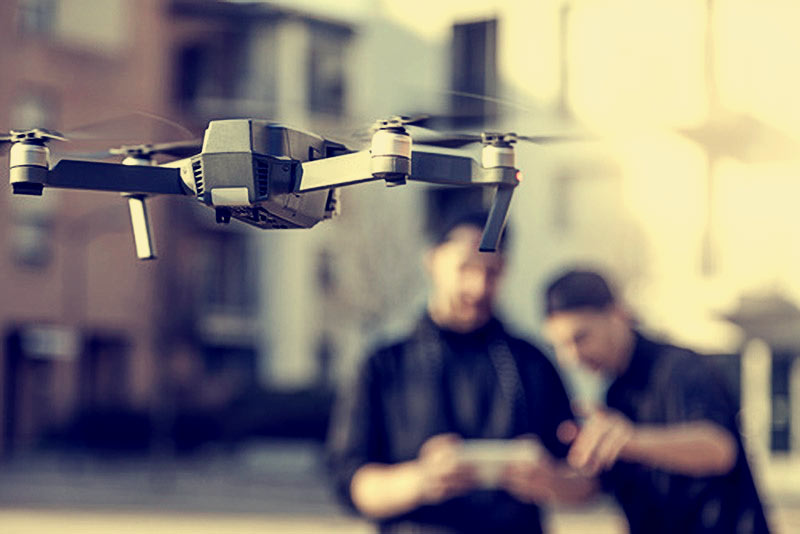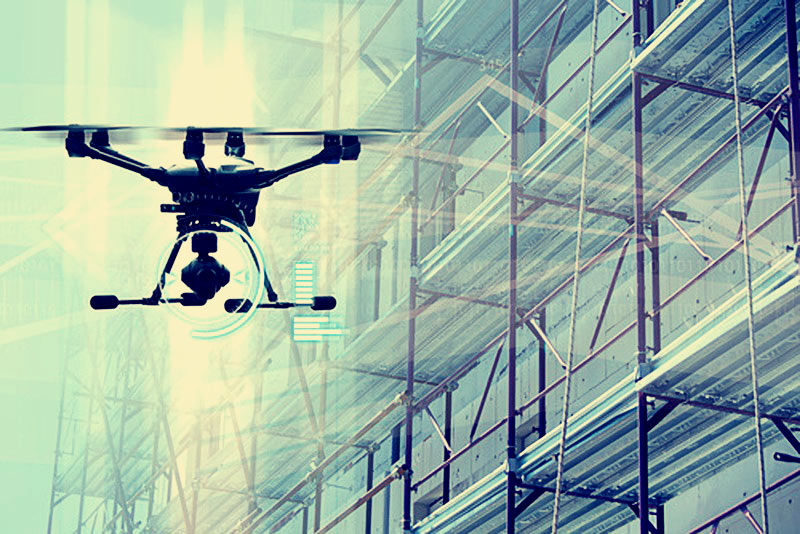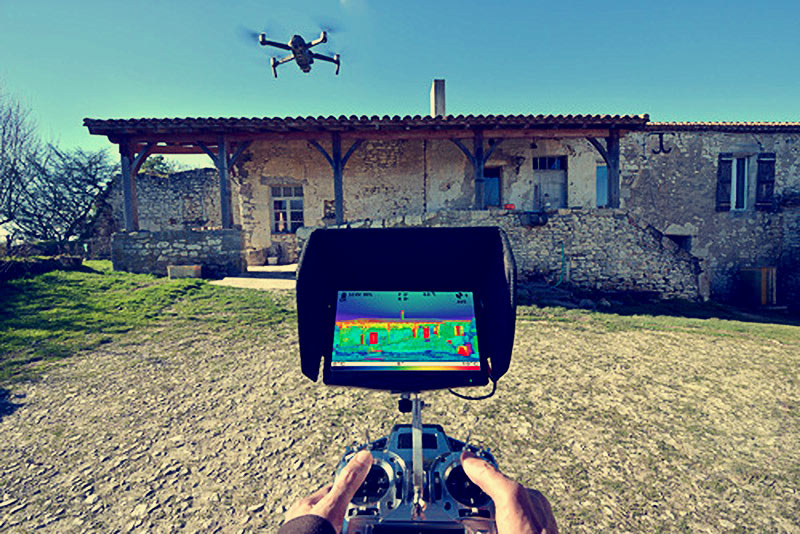The Future Effect of Information Security and Drones
Drones are an essential part of Unnamed Aerial Vehicles (UAV) group. Within the past few years, they have gained huge popularity around the world. As per stats, the global market of drones was observed to be $14 billion in the year 2018. It is expected to grow up to 43 billion by 2024.

Earlier, the major applications of drones were limited only to the military areas, but today, they are finding opportunities in almost every sector. These days buyers can find drones with variable size and distance ranges, sophisticated design, and within reasonable price range.
The applications of drones these days vary from surveillance to agriculture, filmmaking, photography, and recreational purpose and many other functions. As per Amazon, they will be utilizing drones for the delivery of small packages in the near future. However, Dominos is already using drones for instant pizza deliveries. UPS in the US has utilized this technology for shipping medical samples.
But if you look at the other side of the technology, some people are also using it for bad purposes, and such misutilizations can soon turn it into a nightmare. Studies reveal that it is possible to hack drones. These tiny flying objects can be used to hack other electronic devices without even getting consent from the users.
Hazardous applications of drones
Drones can be easily used for various spying purposes. It poses the biggest threat to the privacy of an individual. Several cases have been already reported. For example, a couple used a drone to spy their neighbors, and they landed in prison. Moreover, thieves are also using drones to target houses for robbery.
The main cause behind increasing cases of privacy issues is that most of the countries have yet to introduce specific laws and regulations for drones. However, there are few countries that have created new laws.

The most surprising fact is that some drones are even capable enough to watch through walls with the help of 3D imaging and Wi-Fi technologies. They can replicate the building plans in the form of 3D models so that criminals can avail easy access inside.
Other than this, cyber attacks that were earlier impossible to execute can be now carried out with the help of drones. Some people are using this technology to spy on other networks, to hack servers, block communications and extract data secretly from systems as well.
The major threat of such malicious activities stretches over to the corporate networks. These days companies are looking for solid security protocols to stay protected from cyber attacks and malware.
How hackers are using drones to steal data
Drones can be equipped with tiny computers like Raspberry Pi and sent to the areas where they are not allowed. They can hack Bluetooth, Wi-Fi, and RFID networks in the area.
During Black Hat Security Conference happened in Singapore in the year 2014, a cybersecurity company revealed that drones could be easily connected to a variety of devices such as laptops and smartphones. They intercepted data from attendee’s phones using a drone and software that used to work with the help of minicomputer connected to the drone. It created a false Wi-Fi network, and they were able to extract all essential information, including bank credentials.
Few other studies also reveal that drones that have radio transceivers can also highjack Bluetooth mice. It clearly means that hackers can access all the Bluetooth connected devices, including keyboards and then learn about keystrokes to identify login credentials.
How to stop malicious drones?
Experts around the world are making huge efforts to beat the threats of hostile drones. Stats reveal that the anti-drone market will grow up to $1.85 billion in the year 2024.
Various researchers that are funded by the EU are working hard to find methods to detect and disable malignant drones via KNOX project. Other than this, some big brands like Dedrone and AT&T have joined hands together to deal with this issue.
Below we have listed a few methods that are used to detect malicious drones.
Geofencing

In this case, some virtual boundaries get created within specific physical locations so that the presence of drones can be identified as soon as it reaches a specific area.
Geofencing is a kind of location-based service that is established with the help of Bluetooth, Wi-Fi, RFID, or cellular data. The idea is to create a virtual border using RFID or GPS enabled software at a specific location. The process is quite simple. For instance, a circle is drawn around a certain location on Google Maps. Whenever an unauthorized drone enters that pre-defined era, it immediately generates an alert.
Generally, the regular drones cannot fly restricted areas due to their own geofencing software. But the malicious ones can. You can find dark web websites that sell various types of hacks for drones. It is about removing altitude, geofencing, and speed limitations.
Acoustic sensors
These advanced sensor units can detect drones that are otherwise left undetected by radars. Acoustic sensors work by detecting unique sounds produced by drones and then run them against the database of sound signatures.
Radars
This technology has been used for decades to detect aircrafts. Naturally, it can work for drones as well.
Note that, drone radars usually make use of thermal detection, noise detection, signal identification, and radio signal detection principals.
RF scanners
The high-end radio-frequency scanners are capable enough to analyze electromagnetic spectrum so that specific drone-related transmissions can be identified.
Thermal imaging

You might be aware of the fact that drones make use of cameras powered with heat imaging technology. They work by detecting heat generated by almost all materials and objects around. In such situations, the drone thermal cameras can be used to detect the movement of unwanted UAV on the premises.
The bottom line
Drones have a great impact on human life, and they will be an active part of the future IoT networks in smart cities. But the terrible fact is that these hi-tech units can be also used for malicious activities. Hence, it is important to make serious efforts to ensure security so that unwanted or threatening activities can be detected on time.
Author Bio
John Dee is a Mac addict with a strong background in analyzing and combating security threats to the Macintosh ecosystem. John runs MacSecurity.net website specializing in malware research, software reviews, and groundbreaking industry news. It is his firm belief that underestimating Mac malware is like ignoring the elephant in the room. In his day-to-day work, John focuses on identifying new electronic perils potent enough to create ripples on the Mac security arena. On top of that, he is particularly enthusiastic about implementing effective countermeasures to fend off these menaces.
Photos courtesy of us.fotolia.com




Leave a Reply